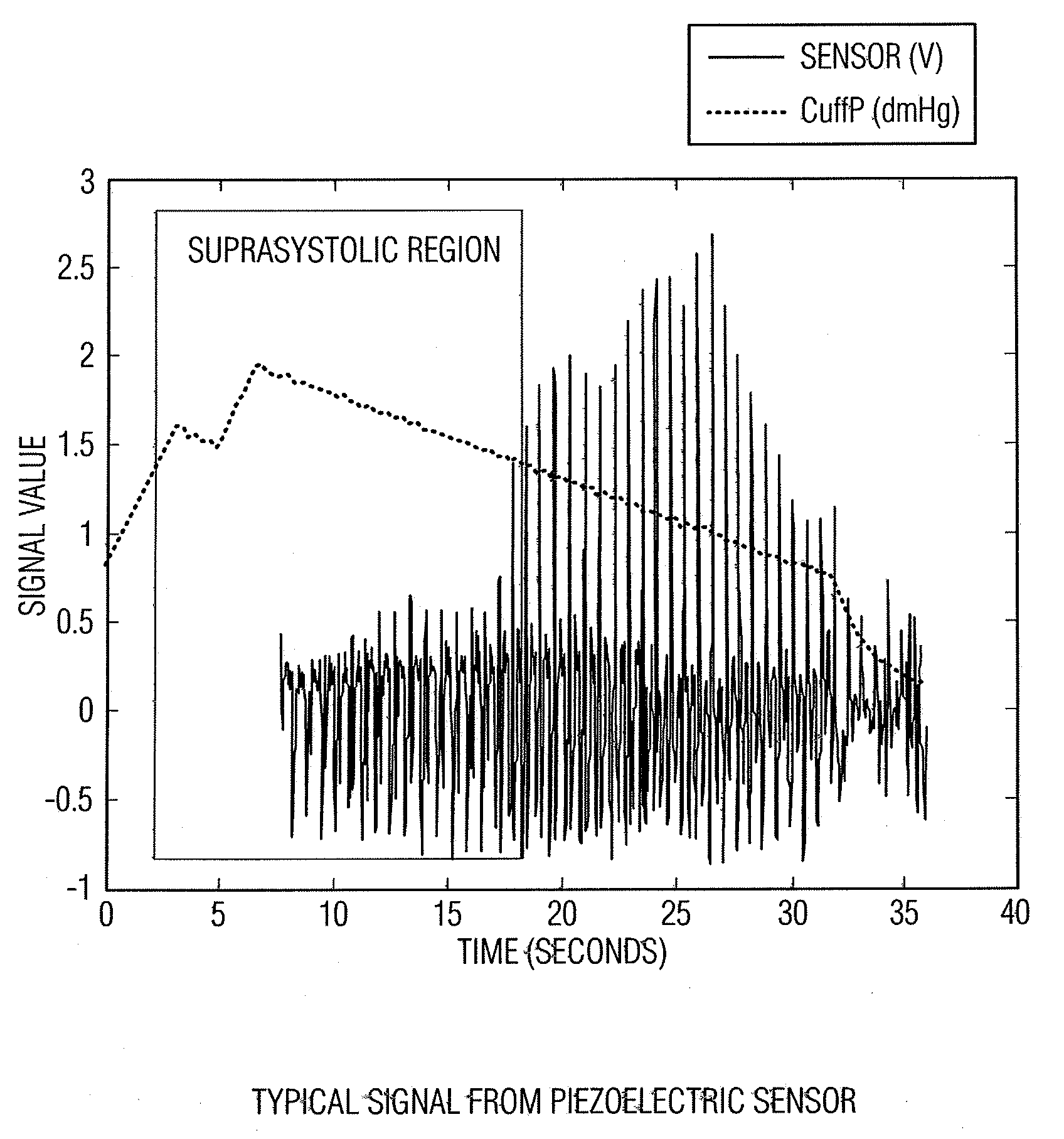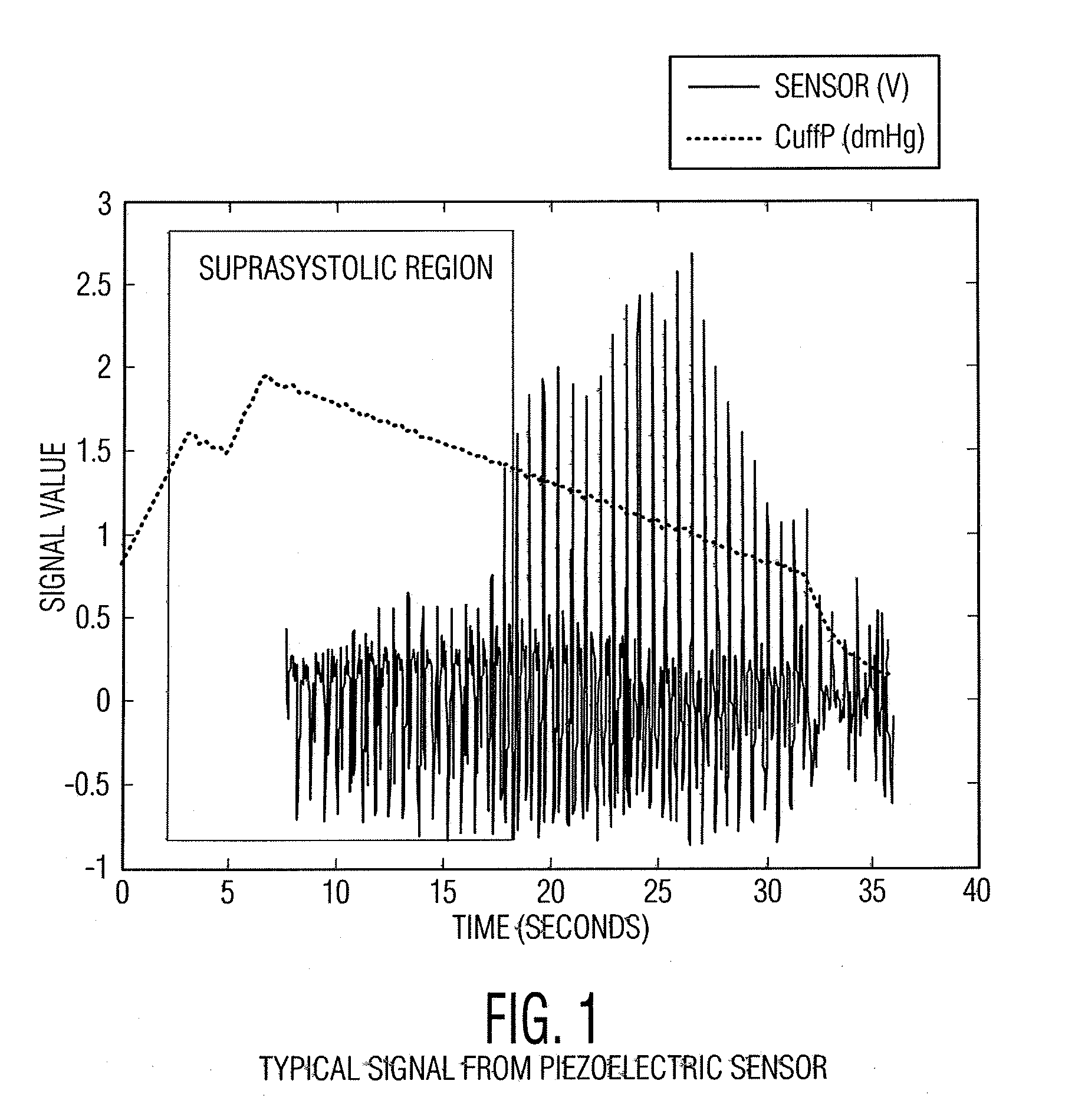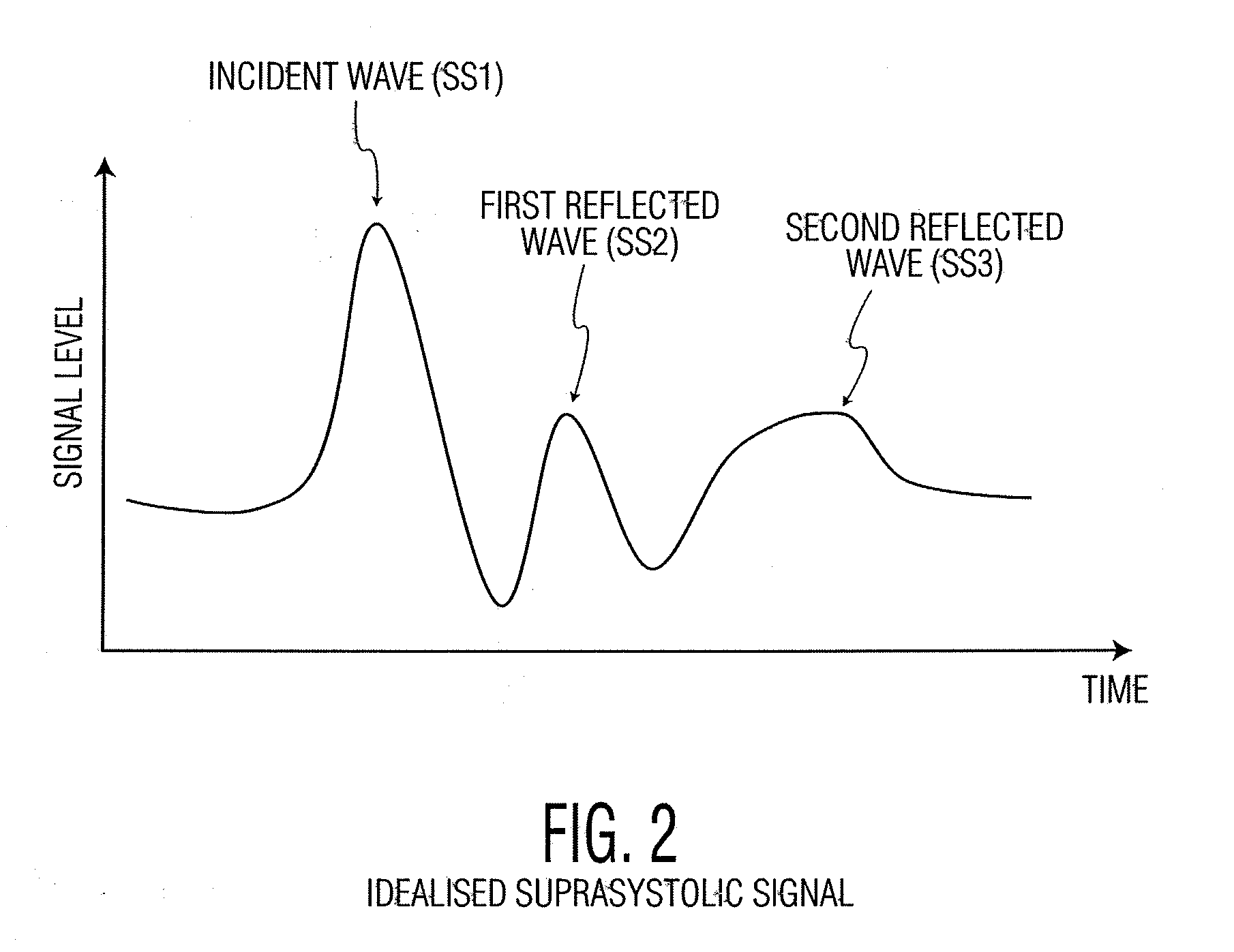Non-invasive measurement of suprasystolic signals
a suprasystolic signal and measurement method technology, applied in the field of cardiovascular assessment, can solve the problems of difficult to discern the exact timing and magnitude of the wave, and achieve the effects of reducing arterial compliance, increasing the strain on the heart, and increasing the volume of strok
- Summary
- Abstract
- Description
- Claims
- Application Information
AI Technical Summary
Benefits of technology
Problems solved by technology
Method used
Image
Examples
Embodiment Construction
[0072]Arterial compliance refers to the stiffness of arteries. In young healthy people, arteries are compliant so that a volume of blood ejected causes them to distend more for a given pressure. By contrast, stiff arteries (arteries with a low compliance) distend less. Compliance (C) is measured by the change in volume (dV) per unit increase in pressure (dp) (Brinton, Cotter et al. 1997; de Simone, Roman et al. 1999):
C=dV / dp (2) True Compliance
Compliance can be measured fairly accurately by stroke volume (SV) divided by pulse pressure (PP) even though the arterial circuit is not a totally closed system (Chemla, Hebert et al. 1998):
C≈SV / PP (3) Estimated Compliance
[0073]Arterial compliance, although important, is not commonly measured in clinical practice, as the measurement is difficult to perform. Pulse pressure is easy to measure using a blood pressure cuff, but stroke volume is more difficult. Studies have measured stroke volume with echocardiography, pulmonary artery catheter...
PUM
 Login to View More
Login to View More Abstract
Description
Claims
Application Information
 Login to View More
Login to View More - R&D
- Intellectual Property
- Life Sciences
- Materials
- Tech Scout
- Unparalleled Data Quality
- Higher Quality Content
- 60% Fewer Hallucinations
Browse by: Latest US Patents, China's latest patents, Technical Efficacy Thesaurus, Application Domain, Technology Topic, Popular Technical Reports.
© 2025 PatSnap. All rights reserved.Legal|Privacy policy|Modern Slavery Act Transparency Statement|Sitemap|About US| Contact US: help@patsnap.com



